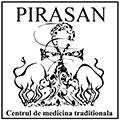Bronchial asthma is an inflammatory chronic disease of the bronchia affecting over 150 million people worldwide. According to the World Health Organization, over 180,000 deaths from complications of the bronchial asthma are recorded yearly. The incidence of asthma has increased by over 50% within the last 15 years.
The bronchial asthma causes the inflammation of the bronchia; it also renders the respiratory apparatus sensitive to allergenic or irritant factors. When the bronchial asthma seizure occurs, the already inflamed respiratory branches react to these factors and they narrow, a phenomenon that reduces the oxygen amount received from the lungs and that causes bronchial spasms, cough, extreme suffocation, noisy breath accompanied by whistling and pressure in the chest.
The asthma seizures may cause the patient’s death where the disease is in an advanced stage and the sick person does not take his or her medication in due time.
The disease usually sets in childhood; yet there have also been recorded cases who underwent the first seizures in the adult period. The symptoms of the seizure may appear after a virosis or as a result of the allergenic and irritant factors’ action. The patient may mistake the symptomatology of the asthma for one of a serious respiratory virosis. Therefore the specialty medical examination is recommended in the event that the previously mentioned symptoms should occur.
Causes
The bronchial asthma is caused by:
- Incorrect breathing (very few people breathe properly and also the great part of the population does not realize how important breathing is for a proper function of the body);
- Because of the incorrect breathing, the upper pulmonary lobes are not used in the breathing process;
- The improperly treated or untreated multiple viroses and the long time or very utter stress affect the functions of the lungs.
The capillaries irrigating the upper lobes of the lungs and the pulmonary alveoli “shut” as a result of the simultaneous action of these factors. Consequently, the vascularisation and the oxygen exchanges taking place normally in this area are reduced to the minimum.
In time, the lungs’ malfunction causes the inflammation of the bronchia; it makes the respiratory apparatus sensitive to the action of the allergenic and irritant factors and it leads to the onset of the specific symptomatology.
Treatment
The allopathic medicine has not found a treatment yet to cure this disease. However, by combining the traditional therapies, the bronchial asthma can be cured and there will be no relapse of the disease.
The treatment consists of acupuncture sessions and administration of certain herb extracts. The procedure implies “opening” of the affected capillaries in order to restore the local vascularisation and in order that the upper pulmonary lobes should function in an almost normal degree. At the same time, one will act at cerebral level, too, in order to restore the cerebral area responsible for the pulmonary functions of the upper lobes.
The treatment can be applied to pregnant women, too, as it is not risky either for the mother or the baby. Obviously, one will avoid puncturing certain points, but – taking into account that there are over 4,000 acupuncture points on the human body, the possible combinations are countless. Anyway, the treatment acts upon the entire body, which means that it helps both the mother to bear the pregnancy period easier and the baby to grow normally.

